In 2015–16, our joint aviation and maritime rescue coordination centre coordinated a total of 436 searches, which resulted in the rescue of 207 people across 7370 incidents. A representative sample of these incidents is below.
Rescue of ocean rowers—James Lewis, north-west of Geraldton, WA
8 July 2015
MRCC Falmouth (Maritime & Coastguard Agency, United Kingdom) telephoned us on 8 July 2015 to advise that the ocean row boat James Lewis with two rowers on board had declared a distress situation 250 kilometres north-west of Geraldton, Western Australia. The rough seas had caused their craft to roll and one of the two rowers had sustained an injury to his head.
We diverted the crude oil tanker MV Dubai Charm and tasked a Western Australia Police aircraft to locate the craft. Two helicopters were pre-positioned to Geraldton to allow a medical retrieval from the MV Dubai Charm if required.
The MV Dubai Charm performed a successful rescue of both rowers. With assistance from our contracted tele-medical advice service (CareFlight Queensland) the rowers were assessed as being fit to remain on board the MV Dubai Charm and continue to the next port. The following day, the rowers were transferred ashore at Fremantle by Water Police launch.

Overdue vessel—FV Returner, Burrup Peninsula, WA
15 July 2015
We assisted Western Australia Police in the search for an overdue domestic commercial vessel with three people aboard on a 10-day prawn trawling voyage in the vicinity of Nickol Bay (Karratha, WA). Initial advice of the missing vessel was received from police during the evening of 15 July. In response, we repositioned the Perth-based Dornier search aircraft Rescue 481 to Karratha that evening and, at the request of police, coordinated the air search the following day, Thursday 16 July.
Modelling indicated that the vessel would have drifted westwards towards the Burrup Peninsula. We tasked Rescue 481 over Nickol Bay and a Rio Tinto helicopter along the coastline of Burrup Peninsula. Search aircraft located objects from the overdue vessel during the afternoon of 16 July but no crew members were in sight. The police vessel Delphinus subsequently retrieved the objects, including an empty inflated life raft with a distress beacon that had not been activated, and confirmed that they were from the overdue vessel.
We completed air search activities on the 16 July. Police continued with ground and coastal searches along the Burrup Peninsula recovering debris from the vessel. A series of underwater sonar searches for the sunken trawler was also undertaken.
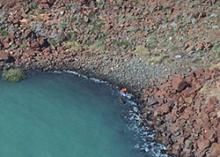
Distressed sailing vessel—SV Kryspen, Bass Strait
30 July 2015
A distress beacon registered to the SV Kryspen was detected in Bass Strait on 30 July 2015. VHF communications were established with the single occupant who advised that he had experienced multiple knock downs in the weather conditions and wanted to abandon the vessel.
The rescue helicopter HEMS 2 and our Essendon-based Dornier aircraft were tasked to respond. The MV Sheng King was also diverted to assist. Attempts to winch the yachtsman were unsuccessful and the weather conditions were too severe for the MV Sheng King to continue assistance. A Melbourne Water Police vessel was then tasked and rendezvoused with the stricken yacht several hours later where the solo yachtsman was rescued and the yacht abandoned.
Missing person—Hastings River, NSW
27 August 2015
Sydney Water Police requested assistance from us in the search for a man who had been reported missing after falling into the Hastings River from the south breakwater at Port Macquarie, New South Wales. The incident was reported to the NSW Police by a member of the public who stated that he swam out to the man at about 11.00 pm on 27 August 2015 but was unable to retrieve him.
We provided drift modelling and search area planning assistance then assumed air search coordination at the request of New South Wales Police. Our Essendon-based Dornier aircraft and five helicopters were tasked to assist. A volunteer marine vessel participating in the surface search located the missing person, deceased, at the mouth of the Hastings River during the afternoon of 28 August.
Beacon activation—Torres Strait Marine Safety Program Safety Grab Bag
29 August 2015
A distress beacon assigned to a Torres Strait Marine Safety Program Safety Grab Bag was detected during the afternoon of 29 August 2015. Grab bags, which include a distress beacon, safety gear and an automated identification system (AIS) transponder, are provided by the program to enable persons travelling between islands in the Torres Strait to contact authorities if in distress or need of assistance. The grab bags can be loaned from one of the Islanders Board of Industry and Service (IBIS) stores located throughout the Torres Strait.
The Queensland Police Vessel Handran was tasked, as was an aircraft of opportunity and a helicopter. The PV Handran located and assisted the vessel and towed it back to Badu Island.
Night rescue—Torres Strait
25 September 2015
A distress beacon registered to a five-metre wahoo dinghy was activated in the vicinity of Turnagain Island, Torres Strait during the evening of 25 September 2015. We obtained information indicating that the vessel was on a passage from Thursday Island to Saibai Island, with reportedly five people on board. We diverted an Australian Border Force helicopter which sighted a dinghy with nine people on board bailing water, near the beacon activation location.
We also tasked a Horn Island rescue helicopter; our Cairns-based Dornier aircraft and HMAS Broome (Royal Australian Navy patrol boat) and the Queensland Police vessel QPV Handran.
The rescue helicopter was able to establish communications with the dinghy, who advised a second dinghy with three on board had overturned. A search immediately commenced and the overturned dinghy with three people clinging to the hull was sighted in rough seas by the Australian Border Force helicopter a short time later. HMAS Broome’s tender rescued the three survivors from the overturned dinghy and transferred them to the QPV Handran. The tender then rescued the remaining nine persons from the other dinghy; all survivors were safely on board the QPV Handran shortly after 3am.
Disabled banana boat—Torres Strait
27 September 2015
We received a report from an Australian Border Force helicopter on the afternoon of 27 September 2015 advising of a banana boat, broken down and in need of assistance on Tudu Island, Torres Strait. A second vessel was reported to be in the vicinity and approximately 19 people were seen on the beach in the area of the disabled vessel.
A second helicopter was tasked to proceed to Tudu Island and ascertain what assistance was needed. Our emergency towage vessel MV Coral Knight, at anchor at Sue Island (50 kilometres away), was also tasked to respond. On arrival at Tudu Island the helicopter crew advised that both vessels had broken down and were without fuel, food or water. There were 21 Papuan nationals associated with the vessels, including five children.
The MV Coral Knight remained at Tudu Island overnight and provided essential provisions and accommodation. All 21 people were transferred to Saibai Island the next day.
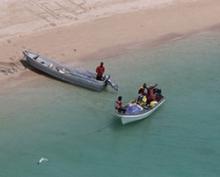
Sinking runabout—Cape Upstart, Queensland
17 October 2015
On 17 October, we received an unlocated alert from an Australian registered distress beacon associated with a 4.8-metre Pro fishing vessel based in Townsville, Queensland. The registered owner’s next of kin advised that the vessel owner was out fishing in the Cape Upstart area with two friends.
We tasked the Townsville rescue helicopter; our Cairns-based Dornier and the local Burdekin Volunteer Marine Rescue. On arriving at the distress beacon location, the rescue helicopter winched two survivors from the water and advised that the third person had been rescued by a passing vessel.
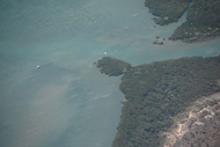
Overdue vessel—SV Colombo 7
9 December 2015
Queensland Police contacted our on 9 December with concerns for the safety of the sailing vessel Colombo 7 overdue on a voyage from Hervey Bay to Brisbane. The vessel, with a single occupant, was last seen on 17 November. Searches of all anchorages between Brisbane and Hervey Bay failed to locate or provide any additional information on the vessel’s whereabouts.
Our issued a broadcast to shipping and on 15 December MRCC Noumea reported that the French Naval vessel Vendemiaire had located the vessel, approximately 313 kilometres east of Coffs Harbour, NSW. The vessel was not crewed and looked like it had been adrift for some time. The FNV Vendemiaire took items off the vessel to assist in any inquiries by Queensland Police but did not take the vessel in tow as it was out bound from Australia heading for Noumea.
The abandoned yacht was sighted by an Australian Border Force surveillance aircraft on 22 December. At the request of the Queensland Coroner to recover the yacht. Our Cairns-based Dornier and Queensland PV Conroy were tasked and subsequently located it. However, it sank while under tow by PV Conroy to Brisbane.
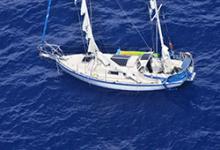
Overturned vessel—Batemans Bay, NSW
24 December 2015
We detected a distress beacon registered to a Canberra-based 6.2 metre Shark Cat on 24 December 2016. On contacting the emergency contacts registered to the distress beacon, we were advised that the vessel with five people on board was fishing off Batemans Bay.
Additional information was provided by the New South Wales Police soon after the beacon detection, indicating that the vessel in question had failed to make a rendezvous with others at a Batemans Bay boat ramp. A rescue helicopter from Moruya was tasked. It located the vessel upturned with five people sitting on the hull, approximately five kilometres off Durras, NSW. All people were winched to safety and taken ashore to be met by ambulance officers who reported no significant injuries to the party.
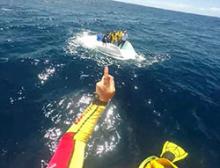
Vessel sinking—FV Putra Tunggal, Arafura Sea, Indonesia
12 January 2016
The Australian Maritime Border Operations Centre contacted us on the evening of 12 January to advise that an Australian Border Force surveillance aircraft had sighted a makeshift raft with four people on board approximately 288 kilometres north-west of Darwin, Northern Territory. The aircraft remained overhead and requested assistance from Australian registered FV Exodus, who was operating 90 kilometres south of the raft. We issued a broadcast to shipping.
We requested additional assistance from the Australian Border Force and the Department of Defence resulting in a second surveillance aircraft and the Royal Australian Navy patrol vessel HMAS Maitland responding. The FV Exodus arrived in the early hours of Wednesday 13 January and rescued all four survivors.
Information obtained from the crew was that they were from the Indonesian fishing vessel Putra Tunggal which had sunk eight days previously. The medical officer from HMAS Maitland assessed that all survivors were in good health. The survivors were transferred to HMAS Maitland and taken to Ashmore Reef where, with the assistance of Australian Border Force, they were transferred to an Indonesian fishing vessel for transit to Kupang, Indonesia.
Medical evacuation—MV Radiance of the Seas
19 January 2016
The master of the MV Radiance of the Seas contacted us during the morning of 19 January requesting medical evacuation for a 50-year-old passenger who had suffered a cardiac arrest. Our contracted tele-medical advice service provider Careflight Qld confirmed the requirement and a Sydney-based NSW Ambulance helicopter was tasked to rendezvous with the MV Radiance of the Seas. Our Brisbane-based Dornier provided communications and safety for the evacuation.
A winch evacuation was successfully completed 50 kilometres east of Port Macquarie later that afternoon and the patient was successfully transferred to the John Hunter Hospital in Newcastle.
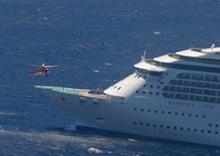
Vessel sinking—Yacht Bikini Bottom, King Island, Bass Strait
4 February 2016
During the early hours of 4 February 2016, we received advice of a PAN (urgency) call on marine VHF radio frequency Channel 16 from the yacht Bikini Bottom eight kilometres south of Grassy Harbour, King Island, Bass Strait. The vessel had four people on board and had suffered steering damage and required assistance. The situation, however, quickly changed and the yacht began taking on water and sinking.
We tasked the Essendon Dornier, two Victorian Ambulance helicopters and, with the assistance of Tasmania Police, a fishing vessel Blue Moon 1 at Currie on King Island to the rendezvous point of yacht Bikini Bottom.
Just after sunrise the FV Blue Moon 1 arrived on scene and was able to rescue the four crew members safely for transfer to King Island without further incident.
Missing vessel—Fishing dory, Great Barrier Reef
5 March 2016
A distress beacon registered to a fishing dory from the FV Invader II was activated in the vicinity of Gould Reef, 90 kilometres east northeast of Bowen, Queensland on the afternoon of Saturday 5 March 2016. Mackay based helicopter, Rescue 412 was tasked to conduct a beacon homing, but was unable to locate the missing dory and its occupant. Our Cairns Dornier was tasked and homed the beacon to the missing dory. Bowen volunteer marine rescue towed the dory back to Bowen.
Our records note that the FV Invader II has had a number of incidents of a similar nature. Details of these events were passed to Police Queensland for further investigation.
Overturned trawler—Cassandra/FRJE, Waddy Point, Fraser Island
3 April 2016
On Sunday 3 April 2016, Queensland Police requested our assistance in the search for the overdue trawler Cassandra/FRJE. The trawler with two crew on board was last known to be 9 kilometres east of Waddy Point, Fraser Island Queensland.
An initial search area of 397 square nautical miles was calculated and searched by our Brisbane based Dornier aircraft, a number of debris sightings were made. A second search utilising ten trawlers, three volunteer rescue vessels, two helicopters was also completed, however no sightings of the two missing crew were made.
The following day, two additional searches were conducted by our Dornier based on local knowledge advice provided to Queensland Police, covering 356 square nautical miles reveals no success.
The final search located a significant amount of debris from the missing vessel which had washed ashore along a 10 kilometre stretch of coastline south of Sandy Cape, Fraser Island. The hull of the fishing vessel was subsequently located by Police Queensland, but the crew members were not located.
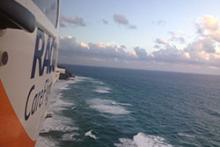
Mechanical failure—Fishing vessel, Timor Sea
19 April 2016
On the 19 April 2016, an Australian Border Force surveillance flight reported sighting an Indonesian fishing vessel with nine people on board approximately 60 kilometres north-east of Ashmore Reef, Timor Sea. The vessel, which was in company with a second smaller vessel, appeared to be disabled and had people waving for assistance.
We accepted coordination of the incident and Australian Border Force Cutter Cape Wessel was tasked to the location from Ashmore Reef. Cape Wessel rendezvoused with the two fishing vessels and established that the disabled vessel had a faulty starter motor and that the smaller vessel did not have sufficient fuel to tow the larger vessel to the nearest safe port of Roti (Indonesia). The crew of Cape Wessel was able to repair the vessel's starter motor and the two vessels departed the area in company, bound for Roti, Indonesia.
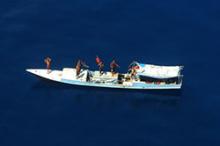
Capsized vessel—FV Sea Breeze, Lyne River Wyndham, WA
25 April 2016
On the morning of 25 April 2016, a distress beacon registered to the recreational fishing vessel Sea Breeze was detected in the Lyne River approximately 70 kilometres north of Wyndham, Western Australia. Emergency contacts for the beacon advised that two people were on a recreational fishing trip.
We diverted an aircraft of opportunity which located a capsized vessel in the Lyne River and sighted two fisherman nearby on the mud flats. A Kununurra-based helicopter and the Wyndham Sea Rescue vessel were tasked and recovered the two fishermen and transferred them to Kununurra for medical assessment and treatment.
Abandoned ship—Spirit of 1770, Lady Musgrave Island
11 May 2016
The 20-metre tourist catamaran Spirit of 1770, with 46 people on board, was reported on fire and adrift 18 kilometres west of Lady Musgrave Island, Great Barrier Reef on the evening of 11 May 2016. The alarm was raised by the vessel through a call to the 000 emergency system and Queensland Police took coordination of the incident. In addition, we also detected the vessel’s distress beacon located in one of the vessel’s life rafts.
All crew and passengers abandoned the vessel into two life rafts. Queensland Police tasked the Round Hill Volunteer Marine Unit with two Ambulance Queensland paramedics on board who arrived on scene just before sunset. They were able to confirm that all personnel were accounted for in the two life rafts, with no injuries other than sea-sickness.
Our Dornier Rescue 471 was tasked and arrived on scene soon after sunset and provided top cover and radio communications until all survivors had been recovered. A number of dedicated and opportunity vessels responded to the incident. Just before midnight, we were advised that all survivors had safely arrived at the Town of 1770 for medical assessment and treatment. A Sea Safety broadcast to shipping was issued for the drifting hulk, which later sank.
Aviation and land-based incidents
Rolled over hire vehicle—Gibb River Road, WA
29 July 2015
On 29 July 2015, a distress beacon associated with a 4WD hire vehicle with three German tourists on board was detected in the vicinity of the Gibb River Road, Western Australia. An aircraft from Broome was tasked by us for a beacon homing and Western Australia Police were requested to initiate checks along the Gibb River Road.
Police located an upturned vehicle and medical assistance was provided to the occupants to treat a broken arm and other minor injuries suffered in the roll over.
Light helicopter crash—VH-JEW, Pilbara, WA
29 July 2015
We conducted a wide area search for an overdue single seat CH7 light kit helicopter VH-JEW in the Pilbara on Wednesday 29 July 2015. We were advised by Port Hedland Police late on Tuesday evening that the pilot, a 62-year-old male, and his aircraft had not arrived as expected at Roy Hill Station (290 kilometres SSE of Port Hedland, WA). Our Perth-based Dornier was tasked to respond and flew from Perth to the vicinity of Roy Hill Station to conduct an electronic and night vision search of the planned route of the helicopter.
With assistance from Western Australia Police, checks were also undertaken of the pilot’s mobile telephone. Information indicated that the last ‘ping’ from the pilot’s phone was received at the Roy Hill Station mobile phone tower after sunset on the evening of 28 July. Analysis of terrain and its impact on line of sight meant that the pilot’s position was within 30 kilometres of his planned destination.
A wide area search commenced on Wednesday 29 July using the Dornier and eight locally-based mustering helicopters operating from Roy Hill Station. Search activity continued throughout the day until search aircraft located the wreckage of VH-JEW late in the afternoon approximately 15 kilometres on the inbound GPS track to Roy Hill Station. A rescue helicopter sent to the crash site reported the pilot as deceased.
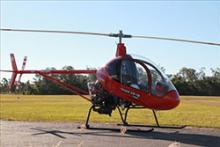
Crash landing—Cessna 210 VH-ERU, Cue Meekatharra, WA
1 August 2015
Late on the evening of 1 August 2015 Western Australia Police advised us that they were responding to an aircraft crash in the Cue Meekatharra area that had occurred approximately 12 hours earlier at around midday (AWST time). The pilot of the aircraft contacted a friend to find him who subsequently contacted police late in the evening after not being able to locate the crashed aircraft.
At the request of Western Australia Police, we tasked the Perth-based Dornier to support police and volunteer ground searches on 2 August 2015. A number of attempts to ‘text’ the pilot proved unsuccessful and weather conditions hampered search operations. Just before sunrise on 2 August the missing person texted police to indicate he could hear the AMSA Dornier in his vicinity. The Dornier was subsequently able to locate the missing person just before 10am (AWST time).
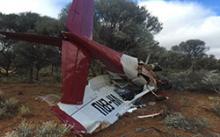
Aircraft crash—Cessna 172, Landor, WA
3 October 2015
On the morning of Saturday 3 October 2015, we detected an emergency beacon registered to VH-PHV, a Cessna 172 light aircraft in the vicinity of Landor, central Western Australia. Emergency contacts associated with the registered beacon advised that the pilot was en route to the Landor races. We diverted a Royal Flying Doctor Service aircraft to the beacon position where the wreckage of the aircraft was located.
A rescue helicopter from Heliwest Pty Ltd was tasked to the accident scene and located the pilot safe, having only suffered mild bumps and bruises during the crash. The pilot was later transported to Mount Tom Price hospital for observation.
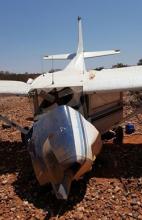
Distress beacon activation—Piper Chieftain N614HR Bankstown, NSW
27 October 2015
A United States of America coded aviation distress beacon registered to a Piper Chieftain aircraft N614HR was detected by satellite in southern New South Wales on 27 October 2015. We conducted extensive enquiries which revealed that the aircraft had been broken up for spare parts following a crash in the United States in 2014. Approximately five hours after the initial activation the location of the distress beacon was resolved to Bankstown, NSW.
Ground searches located the distress beacon (still attached to the original aircraft fuselage) in a shipping container full of recycled aircraft parts at Bankstown aerodrome.
Eurocopter crash—Watagans National Park, NSW
9 November 2015
Early in the morning on 9 November 2015, Brisbane Air Traffic Control notified us that a Eurocopter EC 135 helicopter VH-GKK with three people on board had been reported overdue. The helicopter departed from Breeza (central NSW) on Saturday afternoon bound for Sydney’s northern beaches but failed to arrive.
Very little information on the flight of the helicopter was known as no flight plan or SAR time had been lodged. There were no distress beacon activations and the use of flight tracking software proved negative. We undertook numerous intelligence checks, involving air traffic control radar replay, mobile telephone activity, assessment of weather information, checks of local aerodromes and contact with associates of the three occupants of the aircraft.
Airservices Australia and Telstra were able to provide location information based on an unknown radar contact and a single data ping from one 4G mobile phone on the aircraft. A search using 13 helicopters and three aircraft was conducted, and the wreckage was located by one of the search helicopters in the Watagans National Park, NSW. All three people on board were deceased.
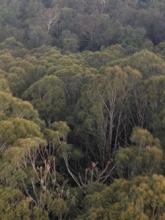
Aircraft crash—Marree, SA
5 January 2015
South Australia Police advised us on 5 January 2015 that a Tecnam Eaglet light sports aircraft with two people on board was overdue on a flight from Marree, South Australia. The aircraft had been undertaking a late afternoon sightseeing flight in the Lake Eyre region. Little information was available on the pilot’s planned route, therefore we were required to calculate a number of route scenarios for the final search area.
Four aircraft and two helicopters were assigned to the search area, including our Essendon-based Dornier which was tasked to conduct an initial night search. The missing aircraft was located the following morning some 30 kilometres northwest of Marree. The aircraft had suffered an engine failure and the pilot had performed a forced landing. Both occupants sustained injuries during the landing and the aircraft was largely undamaged. The non-detection of the aircraft’s distress beacon during forced landing resulted in further investigation. It was noted that the aircraft was fitted with a non-approved 121.5 MHZ distress beacon which is no longer detectable by the Cospas Sarsat system.
Aircraft crash—Jabiru ST3 55-3692, Katoomba, NSW
27 February 2016
A Jabiru light aircraft with one person on board was reported overdue on a local flight from Katoomba, New South Wales. we were advised late in the afternoon on Monday 27 February by a concerned member of the public that the aircraft had not returned. Our Melbourne-based Dornier was tasked with conducting an initial night search of the Katoomba aerodrome and its surrounding areas.
Search activities continued the next day with a planned search area of 50 square nautical miles and involving nine helicopters and the Dornier. The wreckage of the Jabiru was located later that morning in heavily timbered terrain near the end of the runway at Katoomba. The pilot was found deceased.
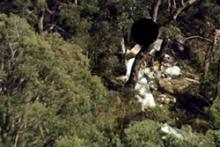
Overdue aircraft—Cessna VH-XZZ C172, Lismore, NSW
21 March 2016
During the evening of Monday 21 March 2016, we were advised of an overdue Cessna 172 aircraft operating from the Lismore Aero Club. The single male occupant of the aircraft had advised that he intended to operate locally in the Lismore area and no flight plan or flight note was submitted.
With the assistance of Airservices Australia and the pilot’s telephone provider, we established that the aircraft departed Lismore at 4:20 pm that afternoon and flown overhead Byron Bay before heading directly east. The last reported radar position was 11 kilometres off the coast with the aircraft travelling at 190 kilometres per hour.
Airservices Australia radar analysis indicating that the aircraft was likely to have crashed into the sea at approximately 5:50 pm. Our Essendon and Cairns Dornier aircraft and a Lismore-based rescue helicopter were tasked with an initial night search. Search activities continued the following day with assistance of four helicopters, the NSW Water Police Coffs Harbour and Ballina Volunteer Marine Rescue. A satellite-enabled datum drift buoy was also deployed to confirm water drift modelling we had undertaken.
Search operations completed after lunch on Tuesday 22 March based on medical advice that the occupant of the aircraft would most likely not have survived the initial impact nor have any subsequent chance of survival without floatation, noting the aircraft did not carry lifejackets or a crew raft.
Helicopter crash—Robinson R 22, Cape Tribulation, Queensland
7 April 2016
During the evening of Thursday 7 April, we received a number of reports that a Robinson 22 helicopter with two people on board had crashed in the vicinity of Cape Tribulation, Queensland. The alarm was raised when the passenger on the helicopter was able to escape from the helicopter and swim ashore.
We tasked the Cairns rescue helicopter RSCU510 to conduct a night search while Queensland Police tasked surface vessels including police vessel Perry Irwin, Port Douglas Coastguard, and private vessel Ocean Safari. Search activities continued the next day and involved both air and sea searches as well as a Navy clearance diving team from HMAS Cairns Naval Base to conduct sonar searches for the missing pilot and helicopter.
Debris and flotsam were sighted by search units on the beach to the north of Noah Beach campground, Cape Tribulation and were positively identified as coming from the missing aircraft. Search operations were suspended on expiry of the timeframe for survivability at last light on 8 April 2016.
On 9 April Queensland Police advised that the wreck of the helicopter had been found approximately 600 metres east of the Noah Creek mouth in approximately seven metres of water. Navy divers established that the aircraft was extensively damaged and that the pilot's seatbelt was in the closed position. The missing pilot was not found within the wreckage.
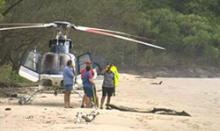
Beacon activation—Pell Cattle Station, Northern Territory
9 April 2016
We detected a GPS encoded distress beacon to the north of the Adelaide River, Northern Territory on the afternoon of Saturday 9 April 2016. Coordination was transferred to the Northern Territory Police who tasked officers from Adelaide River to proceed to Pell Cattle Station to investigate.
With assistance of Pell Station, the site of the activated beacon was located but no signs of distress were evident, (only cattle were in the vicinity). Towards dusk the flashing light on the distress beacon was sighted and the beacon located. Advice from the Northern Territory Police was that the beacon appeared to have activated after being eaten or trampled on by cattle.
Further investigation identified that the distress beacon had been dropped from a helicopter cattle mustering in the area on or around 27 March 2016, the beacon had remained undisturbed since then. The beacon was deactivated by the police and was handed back to the helicopter operating company.
Balloon ditching—IFER VH-VBM, Port Philip Bay
20 May 2016
Airservices Australia advised us on the morning 20 May 2016 that a balloon with 10 people on board was being blown over the water in the vicinity of St Kilda/Black Rock, Port Phillip Bay, Melbourne. After discussions with Police Victoria, coordination was transferred to police with our assistance with an aviation response. We tasked the Dornier Rescue 471 and helicopter Life 36 to assist. The balloon passengers were rescued by vessels and the balloon landed safely on the shore.
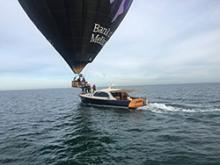
Beacon activation—Teenbura property, Queensland
5 July 2016
We detected a registered distress beacon 50 kilometres west of Mackay on 5 July 2016. AMSA personnel contacted the beacon’s listed emergency contacts who advised that the registered owner was working on his property, Teenbura, checking cattle and scrub bulls. The Mackay based helicopter Rescue 412 was tasked and a ground response coordinated with Queensland Police.
Rescue 412 arrived at the beacon activation location and advised that a person had been attacked by a bull, was badly injured and losing consciousness. The patient was treated at the scene by Ambulance Queensland and transferred to Mackay Hospital.
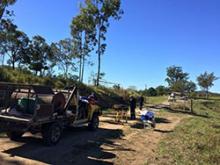
SPOT activation—Tobermorey Station, western Queensland
9 June 2016
We received a SPOT satellite messenger device activation advice from the GEOS international emergency response centre (IERCC) located in Houston, Texas on 9 June 2016. The SPOT device had been activated in a position 220 kilometres west of Mt Isa, Queensland in the vicinity of the Queensland\Northern Territory border.
We contacted a local station owner from Manners creek station Tobermorey and agreed to proceed to the SPOT device location. On arrival he advised that he had located a crashed motorcycle and safety equipment, but no rider. Additional information from the IERCC indicated that the device was moving towards the town of Urandangi, Queensland. The motorcyclist, with the assistance of local indigenous people, subsequently arrived at Urandangi and was treated by the local nurse for apparent neck and spinal injuries.
Retrieval Services Queensland activated the Royal Flying Doctor Service and the patient was transferred to Mt Isa hospital for further treatment.